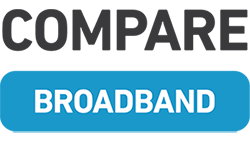- What is the NBN FTTN Connection?
- How Fast Is NBN FTTN?
- How Does NBN FTTN Affect The Speed Of My Pay TV Service?
When the NBN project was launched in 2009, it paved the way for a better internet infrastructure that benefits all residents of Australia. It made high-speed internet connection more accessible to people at rates they can afford.
NBN offers two different types of connection: Fixed Line and Fixed Wireless. These two are both being developed to cater to subscribers nationwide, albeit with a few differences in the way they transmit signals.
Fixed Line connections use a mix of fibre optic cables and other technology in transmitting data from the network to the end-user, while Fixed Wireless connections use radio signals that are transmitted from a tower.
NBN’s Fixed Line connection consists of five different types:
- FTTP (Fibre to the Premises)
- FTTN (Fibre to the Node)
- FTTB (Fibre to the Building/Basement)
- FTTC (Fibre to the Curb)
- HFC (Hybrid Fibre Coaxial)
In this article, we will zero in on the FTTN type of connection.
FTTN in a Nutshell
Fibre to the Node or FTTN is different from the other NBN fixed-line connection types in that it uses a nearby fibre node to complete the connection between the network and the existing copper lines, which will then transmit the network’s signal to the subscriber’s premises. This fibre node is typically in the form of a street cabinet or a central network box.
Like other fixed-line types, the accessibility to FTTN depends on the existing infrastructure in a particular area or neighbourhood. This means that some locations may have access to FTTN while some may not.
Customers do not have a say as to which type of fixed-line connection will be set up in their area. But once the place is declared NBN-ready, people will have to make the switch to NBN within 18 months or they will lose their access to the internet. Check out this NBN rollout map to know if your current address has access to FTTN.
FTTN installation costs less than FTTP but there isn’t much difference in the connection speeds. This allows internet service providers to offer more affordable NBN broadband plans and bundles to customers.
If NBN is being set up at your place of residence and you are looking to upgrade to the network soon, read up on our comparison of NBN broadband plans from various service providers.
Frequently Asked Questions
Is there equipment needed for an FTTN connection?
Setting up an FTTN connection requires the use of copper wires and a Premises Connection Device that will have to be installed outdoors. A telephone wall socket within your premises is also needed. If you have a wall socket with older technology (the type with three prongs), you may have to purchase an RJ11 adapter so you can plug in a modern cable.
Will there be necessary installations within the premises?
Since FTTN connections are set up outside the premises, there won’t be necessary installations within your premises as far as NBN is concerned unless you need a telephone wall socket. However, depending on your service provider of choice, there may also be other equipment necessary. In terms of modems, these are usually self-installed and are sent to your address with complete setup instructions.
Will switching to an NBN FTTN connection affect my pay-TV subscription?
Pay-TV services and other physical connections won’t be affected by an FTTN connection. These services (phone, internet, pay-TV) may be unavailable for a few hours while the NBN set up is ongoing. But once your NBN FTTN connection is activated, you will be able to access these services again.


